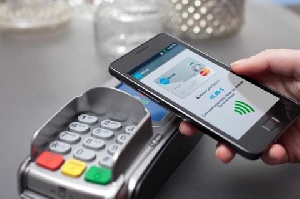 The COVID pandemic has had an unintended effect of accelerating the use of other forms of payments
The COVID pandemic has had an unintended effect of accelerating the use of other forms of payments
Payment is a key function of our economy, allowing for the exchange of goods and services. Traditionally paper money and coins were the most dominant forms of payments, recently digital payments are making inroads.
The global COVID-19 pandemic has had the unintended effect of accelerating the use of other forms of payments aside paper money and coins. This is because paper money and coins are said to be conduits for the transmission of COVID.
The World Health Organization (WHO) is known to have issued a warning at the beginning of the COVID-19 pandemic that paper money could carry and spread the virus.
Though this assertion is not totally conclusive, there is no harm in reducing risks associated with contact-type payments. National public health officials have taken to advising that people make use of payment options that reduce contact with persons or devices, such as POS, since contactless payment opportunities make it safe for both consumers and employees receiving payments.
Cards have been advocated as a preferred means of payments; however, cards appear to have the same challenges of being a possible vector of transmission since users must make contact with the point of sale (POS) device when making payments. The solution to this quandary then is contactless payments.
As the name implies this is a form of payment in which the person making payments does not make contact with a POS or any other payment processing device which is used by multiple persons.
What is contactless payments
Contactless payment systems are enabled by technologies such as Radio-frequency identification (RFID) RFID or NFC (Near Field Communication) or QR Code technology using different devices such as credit and debit cards, smartphones, key fobs (small, programmable hardware device) and other devices such as wearables (smartwatches).
Banks, financial institutions, and tech firms such as Apple App, Google Pay, Fitbit Pay, Samsung are now offering clients the ability to make payments through secured contactless systems. The significant rise in adoption of contactless payments will account for more than 1 in 2 POS transactions globally by 2022. Research by Juniper Research (https://bit.ly/3qyM5Sa) indicates that more than half (53%) of global transactions at POS will be contactless within 5 years.
Some banks are now offering mobile-app enabled cardless ATMs, which allows clients to do transactions on the ATM with a simple swipe, scan, or tap without the need to physically insert their ATM card into the ATM.
How Contactless Payments Work
A Radio-frequency identification (RFID) enables memory chips to store data on payment cards. This pairs with the RFID reader that decodes the message, in this case, the merchant POS. Beyond contactless payments, RFID use cases are found in toll collections, keyless entry, inventory management, and tracking and tracing of goods.
The second technology which supports contactless payments is near-field communication (NFC), which is a newer and more complex version of RFID, however, it functions within a larger distance in comparison to RFID.
In Ghana, in recent times, some banks and FinTech are offering contactless services to their clients using QR code technology. This technology enables payment recipients, such as retailers, to undertake in-person transactions using payments cards, linked bank accounts, and other digital payment solutions to make payments without the need to touch a POS keypad.
The use of contactless payments comes with advantages such as security, convinience, speed, effortless transactions, and overall better client experience when making payments.
To put the element of speed for instance, into perspective; it takes 30 to 45 seconds using a chip-enabled card to make a transaction, the same transaction on contactless system takes 10-15 seconds.
Irrespective of these advantages there are a number of problems with contactless cards. For example, they are more exposed to fraud since a thief with a suitable card reader can have access to your card without your knowledge. Since there is no PIN required for transactions, when your card falls into the wrong hands, they can make payments using it.
This is easier for thieves because it is not protected by a PIN. Another challenge with the contactless payments system is the transactions limit, since using these tap-to-pay do not require a PIN nor a signature, it is prudent to have cash out limits as a fraud mitigation mechanism.
In conclusion, contactless payments present a solution in the face of the global COVID pandemic in terms of reduction of transmission risks.
More importantly, it provides a harbinger to the fast evolution of payments systems, which are becoming more innovative, supporting end-user convenience and offering easy ways for merchants to process payments.